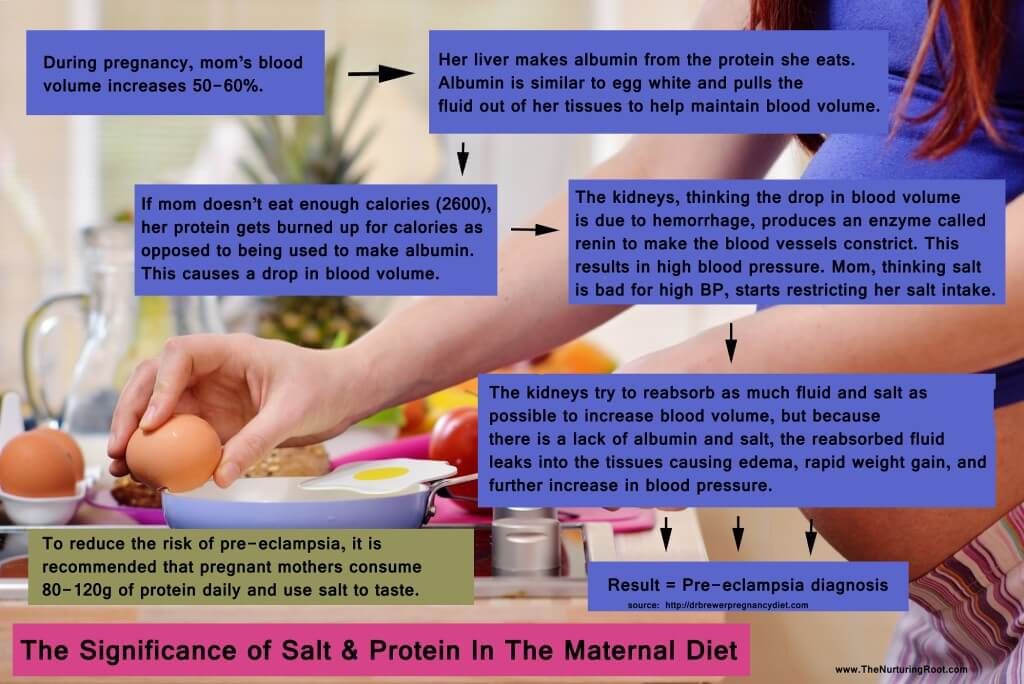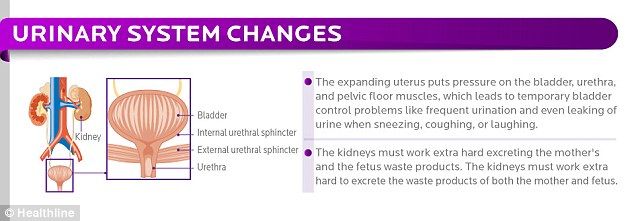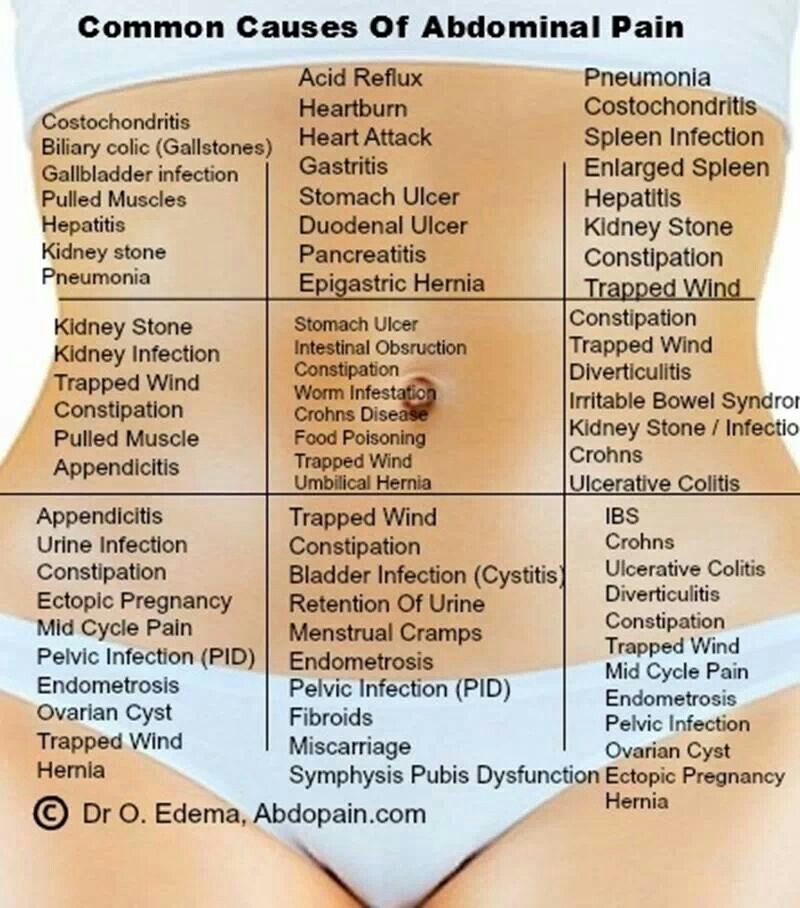Pregnant and leaking white fluid
Milky White Discharge During Pregnancy
Vaginal discharge isn’t a topic most of us want to discuss with our friends. But the fact is, every woman experiences some degree of discharge. And that’s actually a very good thing; it helps to keep vaginal tissue healthy and protects against infection, according to the Mayo Clinic. What’s more, it’s very normal to have an increase in discharge when you have a baby on board. It’s called leukorrhea of pregnancy, and it’s no big deal. But it may explain why you’re feeling slightly swampy down there. So what exactly is leukorrhea and what does it look like? We’re sharing everything you need to know about this thin, milky white discharge—plus, some tips to help you feel a bit fresher.
In this article:
What is leukorrhea?
What does milky white discharge mean?
What does leukorrhea look like during pregnancy?
When to call the doctor
Tips for coping with leukorrhea during pregnancy
What Is Leukorrhea?
Leukorrhea is the medical term for vaginal discharge, and it’s common to have more of it during pregnancy. In the vast majority of cases, it’s completely normal. But when does leukorrhea start during pregnancy? If you recently learned that you’re expecting, you can also expect an uptick in leukorrhea; early pregnancy is often when many women notice a sudden surge. “Leukorrhea may become more noticeable, especially during the first trimester and toward the end of the third trimester closer to delivery,” says Heather Lopez, MD, an ob-gyn with BJC Medical Group at Missouri Baptist Medical Center. She explains that this is “due to increased blood flow to the vagina as well as an increase in pregnancy hormones.”
What Does Milky White Discharge Mean?
Normal vaginal discharge changes throughout a woman’s cycle; as you approach and reach ovulation, cervical mucus may evolve from a cloudy, milky white hue to a more translucent discharge with a stretchy, slippery texture.
You may have a similar thin, milky white discharge during pregnancy. That’s simply one way to describe the inevitable increase in moisture that occurs during pregnancy; you may also notice an increase in sweat in that general area too, which is also common during pregnancy. (Chalk it up to those surging hormones.) For most pregnant women, leukorrhea does resemble milk; it’s somewhat watery and white or cloudy. Leukorrhea discharge can even leave a chalky stain on your underwear. Still, there are many variations of “normal” when it comes to leukorrhea in pregnancy, so don’t be surprised if your discharge looks a bit different.
(Chalk it up to those surging hormones.) For most pregnant women, leukorrhea does resemble milk; it’s somewhat watery and white or cloudy. Leukorrhea discharge can even leave a chalky stain on your underwear. Still, there are many variations of “normal” when it comes to leukorrhea in pregnancy, so don’t be surprised if your discharge looks a bit different.
What Does Leukorrhea Look Like During Pregnancy?
Heather Bartos, MD, an ob-gyn and medical director at Be. Women’s Health & Wellness in Frisco, Texas, outlines the many different types of leukorrhea discharge: “Normal leukorrhea can be a milky white vaginal discharge that’s opaque. But it can also be a bit yellow or even slightly brown.” If it’s more of a clear mucus, that’s fine too. ”But it’s usually thin, unlike the thicker curd-like discharge you typically see with a yeast infection,” she explains.
So how do you know what’s normal and what’s not when it comes to leukorrhea in pregnancy? Just keep an eye out for any changes to the discharge you’re having. “When I talk to my patients about leukorrhea, we discuss that the amount and frequency of leukorrhea can be different for each patient,” says Lopez.
“When I talk to my patients about leukorrhea, we discuss that the amount and frequency of leukorrhea can be different for each patient,” says Lopez.
When to Call the Doctor
While leukorrhea discharge varies from woman to woman, there are some potential red flags to watch for. “Call your doctor if the leukorrhea has changed for you—it now has a different smell or it’s blood tinged, meaning there’s a pink or dark brown tinge to it, or if it becomes very irritating and you’re worried that it might be something like yeast or bacterial vaginosis,” Bartos advises. When it comes to leukorrhea discharge, you’ll want to reach out to your OB or midwife if you experience any of the following:
- A sudden increase in watery discharge. If you’re experiencing what seems like a constant flow or perpetual dripping of thin, watery fluid, it could indicate a small leak of amniotic fluid instead of leukorrhea. How can you tell the difference? Amniotic fluid leak will keep going and may even smell slightly sweet.
 Leukorrhea can be annoying, but it won’t gush out and shouldn’t smell like much of anything.
Leukorrhea can be annoying, but it won’t gush out and shouldn’t smell like much of anything. - A greenish tint or foul smell. “It’s important to call your doctor if you notice that the leukorrhea becomes associated with a foul odor, or if it’s causing irritation such as painful urination or a burning sensation in the vagina,” says Lopez. These symptoms may indicate an infection.
- An increase in thickness or chunky white discharge. Leukorrhea is typically thin. If it becomes extra thick or has a chunky white texture, it can be a sign of a yeast infection, which your doctor can treat to prevent further discomfort and itchiness.
Tips for Coping With Leukorrhea During Pregnancy
Experiencing extra leukorrhea discharge during pregnancy isn’t usually something to worry about. It can be kind of inconvenient and annoying, though—feeling perpetually damp or oozy down there isn’t particularly pleasant. The key to abating any discomfort is taking proactive steps to make yourself feel dry and fresh. “If leukorrhea during pregnancy is causing irritation or itchiness, it’s okay to use a zinc oxide cream to form a protective barrier,” says Bartos. She also suggests dusting a pinch of cornstarch into your underwear to help absorb some of the excess moisture. Other helpful tips for dealing with the milky white discharge of pregnancy? Lopez suggests wearing a panty liner and opting for breathable cotton underwear. She also warns against any vaginal douching.
“If leukorrhea during pregnancy is causing irritation or itchiness, it’s okay to use a zinc oxide cream to form a protective barrier,” says Bartos. She also suggests dusting a pinch of cornstarch into your underwear to help absorb some of the excess moisture. Other helpful tips for dealing with the milky white discharge of pregnancy? Lopez suggests wearing a panty liner and opting for breathable cotton underwear. She also warns against any vaginal douching.
Leukorrhea isn’t the most glamorous side effect of pregnancy, but it’s not something to stress about either. Remember: That thin, milky white discharge is helping keep your vagina clean, and it should eventually subside. Of course, if you have any concerns about normal (or abnormal) leukorrhea or anything else, reach out to your doctor.
About the experts:
Heather Bartos, MD, is an ob-gyn and the medical director of Be. Women’s Health & Wellness in Frisco, Texas. A navy veteran, she spent 12 years serving the women and spouses of the armed forces, and was an associate professor at the Uniformed Services University of Health Sciences in Bethesda, Maryland. She completed her residency at Baylor College of Medicine, and earned her medical degree at The University of Texas.
She completed her residency at Baylor College of Medicine, and earned her medical degree at The University of Texas.
Heather Lopez, MD, is an ob-gyn with BJC Medical Group at Missouri Baptist Medical Center. She earned her medical degree from Florida State University in Tallahassee.
Please note: The Bump and the materials and information it contains are not intended to, and do not constitute, medical or other health advice or diagnosis and should not be used as such. You should always consult with a qualified physician or health professional about your specific circumstances.
Plus, more from The Bump:
Bleeding and Spotting During Pregnancy: What It May Mean
15 Early Signs of Pregnancy
What to Do About Early Pregnancy Cramps
save article
Pregnancy Week by Week
Select your week below to track each stage of your first trimester.
Join
Already a member? Log In
Sign up for weekly updates to help you on the road to parenthood!
Choose Your Journey
Want a personalized experience?
Download The Bump App for daily pregnancy and newborn updates with our free app
Next on Your Reading List
Milky White Discharge During Pregnancy
Vaginal discharge isn’t a topic most of us want to discuss with our friends. But the fact is, every woman experiences some degree of discharge. And that’s actually a very good thing; it helps to keep vaginal tissue healthy and protects against infection, according to the Mayo Clinic. What’s more, it’s very normal to have an increase in discharge when you have a baby on board. It’s called leukorrhea of pregnancy, and it’s no big deal. But it may explain why you’re feeling slightly swampy down there. So what exactly is leukorrhea and what does it look like? We’re sharing everything you need to know about this thin, milky white discharge—plus, some tips to help you feel a bit fresher.
But the fact is, every woman experiences some degree of discharge. And that’s actually a very good thing; it helps to keep vaginal tissue healthy and protects against infection, according to the Mayo Clinic. What’s more, it’s very normal to have an increase in discharge when you have a baby on board. It’s called leukorrhea of pregnancy, and it’s no big deal. But it may explain why you’re feeling slightly swampy down there. So what exactly is leukorrhea and what does it look like? We’re sharing everything you need to know about this thin, milky white discharge—plus, some tips to help you feel a bit fresher.
In this article:
What is leukorrhea?
What does milky white discharge mean?
What does leukorrhea look like during pregnancy?
When to call the doctor
Tips for coping with leukorrhea during pregnancy
What Is Leukorrhea?
Leukorrhea is the medical term for vaginal discharge, and it’s common to have more of it during pregnancy. In the vast majority of cases, it’s completely normal. But when does leukorrhea start during pregnancy? If you recently learned that you’re expecting, you can also expect an uptick in leukorrhea; early pregnancy is often when many women notice a sudden surge. “Leukorrhea may become more noticeable, especially during the first trimester and toward the end of the third trimester closer to delivery,” says Heather Lopez, MD, an ob-gyn with BJC Medical Group at Missouri Baptist Medical Center. She explains that this is “due to increased blood flow to the vagina as well as an increase in pregnancy hormones.”
But when does leukorrhea start during pregnancy? If you recently learned that you’re expecting, you can also expect an uptick in leukorrhea; early pregnancy is often when many women notice a sudden surge. “Leukorrhea may become more noticeable, especially during the first trimester and toward the end of the third trimester closer to delivery,” says Heather Lopez, MD, an ob-gyn with BJC Medical Group at Missouri Baptist Medical Center. She explains that this is “due to increased blood flow to the vagina as well as an increase in pregnancy hormones.”
What Does Milky White Discharge Mean?
Normal vaginal discharge changes throughout a woman’s cycle; as you approach and reach ovulation, cervical mucus may evolve from a cloudy, milky white hue to a more translucent discharge with a stretchy, slippery texture.
You may have a similar thin, milky white discharge during pregnancy. That’s simply one way to describe the inevitable increase in moisture that occurs during pregnancy; you may also notice an increase in sweat in that general area too, which is also common during pregnancy. (Chalk it up to those surging hormones.) For most pregnant women, leukorrhea does resemble milk; it’s somewhat watery and white or cloudy. Leukorrhea discharge can even leave a chalky stain on your underwear. Still, there are many variations of “normal” when it comes to leukorrhea in pregnancy, so don’t be surprised if your discharge looks a bit different.
(Chalk it up to those surging hormones.) For most pregnant women, leukorrhea does resemble milk; it’s somewhat watery and white or cloudy. Leukorrhea discharge can even leave a chalky stain on your underwear. Still, there are many variations of “normal” when it comes to leukorrhea in pregnancy, so don’t be surprised if your discharge looks a bit different.
What Does Leukorrhea Look Like During Pregnancy?
Heather Bartos, MD, an ob-gyn and medical director at Be. Women’s Health & Wellness in Frisco, Texas, outlines the many different types of leukorrhea discharge: “Normal leukorrhea can be a milky white vaginal discharge that’s opaque. But it can also be a bit yellow or even slightly brown.” If it’s more of a clear mucus, that’s fine too. ”But it’s usually thin, unlike the thicker curd-like discharge you typically see with a yeast infection,” she explains.
So how do you know what’s normal and what’s not when it comes to leukorrhea in pregnancy? Just keep an eye out for any changes to the discharge you’re having. “When I talk to my patients about leukorrhea, we discuss that the amount and frequency of leukorrhea can be different for each patient,” says Lopez.
“When I talk to my patients about leukorrhea, we discuss that the amount and frequency of leukorrhea can be different for each patient,” says Lopez.
When to Call the Doctor
While leukorrhea discharge varies from woman to woman, there are some potential red flags to watch for. “Call your doctor if the leukorrhea has changed for you—it now has a different smell or it’s blood tinged, meaning there’s a pink or dark brown tinge to it, or if it becomes very irritating and you’re worried that it might be something like yeast or bacterial vaginosis,” Bartos advises. When it comes to leukorrhea discharge, you’ll want to reach out to your OB or midwife if you experience any of the following:
- A sudden increase in watery discharge. If you’re experiencing what seems like a constant flow or perpetual dripping of thin, watery fluid, it could indicate a small leak of amniotic fluid instead of leukorrhea. How can you tell the difference? Amniotic fluid leak will keep going and may even smell slightly sweet.
 Leukorrhea can be annoying, but it won’t gush out and shouldn’t smell like much of anything.
Leukorrhea can be annoying, but it won’t gush out and shouldn’t smell like much of anything. - A greenish tint or foul smell. “It’s important to call your doctor if you notice that the leukorrhea becomes associated with a foul odor, or if it’s causing irritation such as painful urination or a burning sensation in the vagina,” says Lopez. These symptoms may indicate an infection.
- An increase in thickness or chunky white discharge. Leukorrhea is typically thin. If it becomes extra thick or has a chunky white texture, it can be a sign of a yeast infection, which your doctor can treat to prevent further discomfort and itchiness.
Tips for Coping With Leukorrhea During Pregnancy
Experiencing extra leukorrhea discharge during pregnancy isn’t usually something to worry about. It can be kind of inconvenient and annoying, though—feeling perpetually damp or oozy down there isn’t particularly pleasant. The key to abating any discomfort is taking proactive steps to make yourself feel dry and fresh. “If leukorrhea during pregnancy is causing irritation or itchiness, it’s okay to use a zinc oxide cream to form a protective barrier,” says Bartos. She also suggests dusting a pinch of cornstarch into your underwear to help absorb some of the excess moisture. Other helpful tips for dealing with the milky white discharge of pregnancy? Lopez suggests wearing a panty liner and opting for breathable cotton underwear. She also warns against any vaginal douching.
“If leukorrhea during pregnancy is causing irritation or itchiness, it’s okay to use a zinc oxide cream to form a protective barrier,” says Bartos. She also suggests dusting a pinch of cornstarch into your underwear to help absorb some of the excess moisture. Other helpful tips for dealing with the milky white discharge of pregnancy? Lopez suggests wearing a panty liner and opting for breathable cotton underwear. She also warns against any vaginal douching.
Leukorrhea isn’t the most glamorous side effect of pregnancy, but it’s not something to stress about either. Remember: That thin, milky white discharge is helping keep your vagina clean, and it should eventually subside. Of course, if you have any concerns about normal (or abnormal) leukorrhea or anything else, reach out to your doctor.
About the experts:
Heather Bartos, MD, is an ob-gyn and the medical director of Be. Women’s Health & Wellness in Frisco, Texas. A navy veteran, she spent 12 years serving the women and spouses of the armed forces, and was an associate professor at the Uniformed Services University of Health Sciences in Bethesda, Maryland. She completed her residency at Baylor College of Medicine, and earned her medical degree at The University of Texas.
She completed her residency at Baylor College of Medicine, and earned her medical degree at The University of Texas.
Heather Lopez, MD, is an ob-gyn with BJC Medical Group at Missouri Baptist Medical Center. She earned her medical degree from Florida State University in Tallahassee.
Please note: The Bump and the materials and information it contains are not intended to, and do not constitute, medical or other health advice or diagnosis and should not be used as such. You should always consult with a qualified physician or health professional about your specific circumstances.
Plus, more from The Bump:
Bleeding and Spotting During Pregnancy: What It May Mean
15 Early Signs of Pregnancy
What to Do About Early Pregnancy Cramps
save article
Pregnancy Week by Week
Select your week below to track each stage of your first trimester.
Join
Already a member? Log In
Sign up for weekly updates to help you on the road to parenthood!
Choose Your Journey
Want a personalized experience?
Download The Bump App for daily pregnancy and newborn updates with our free app
2nd trimester of pregnancy: what happens to the fetus
2nd trimester of pregnancy: what happens to the fetus - Private maternity hospital Ekaterininskaya Clinics Most women enjoy the 2nd trimester of pregnancy more than the first, with the disappearance of morning sickness, breast tenderness and fatigue. But be prepared for some other symptoms to appear!
But be prepared for some other symptoms to appear!
- Pain. As a result of stretching of the tissues of the body, you may experience pain in the sides and under the abdomen. Weight gain can cause back pain and leg cramps. The doctor will advise you on simple exercises for such cases. nine0008
- Stuffy nose. Increased hormone levels can lead to nasal congestion and nosebleeds.
- Soft gums. Your gums tend to bleed, so oral hygiene requires special attention and careful brushing.
- Skin itching. The skin of the abdomen may itch as a result of stretching associated with the growth of the child. Try to use a moisturizer daily to avoid stretch marks. nine0008
- Varicose veins and hemorrhoids. During pregnancy, you will be more susceptible to varicose veins and hemorrhoids. Try not to stand or sit for too long, and avoid crossing your legs while sitting. If discomfort or pain occurs in the anus, the doctor may prescribe a remedy for hemorrhoids.

- Vaginal discharge. A white, thin vaginal discharge called leucorrhea is normal during this period of pregnancy. These secretions help keep the vagina healthy. If you find discharge of a different type or color, contact your doctor for advice. nine0008
- Violation of skin pigmentation. Pregnancy hormones may contribute to the appearance of dark spots on the face and abdomen. The sun can exacerbate the appearance of spots, so use sunscreen when you go outside. Sun exposure without skin protection is contraindicated!
- Shortness of breath. As your lungs allow more oxygen to meet your baby's needs, you may experience shortness of breath or a faster rate of breathing.
- Increased appetite. As your child grows, you may feel hungry all the time, but there is no need to "eat for two". If you need to snack, choose healthy foods like fruit or yogurt.
The main stages of the 2nd trimester of pregnancy
- The first time you can feel the baby moving at 18-20 weeks of pregnancy.
 This phenomenon is called "revival" and is initially felt as a flutter in the abdomen.
This phenomenon is called "revival" and is initially felt as a flutter in the abdomen. - As your baby grows, your belly will grow. nine0008
2nd trimester baby development
End of 2nd trimester:
- Your baby moves and responds to touch and sound.
- Eyelids begin to open, eyebrows and eyelashes are visible.
- The skin is covered with fine, downy hairs and a creamy white substance called primordial lubrication.
- Swallowing and sucking reflexes develop.
- Hair began to grow on the head.
- Fingerprint lines have formed on the fingers. nine0008
- Baby's body length is about 23 cm from head to lower torso.
Mobile application of the clinic
You can make an appointment with a doctor, get tests
and much more...
Fill out the form to make an appointment or order a call back
I agree with personal data processing policy and user agreement I also give my consent to the processing of personal data. nine0003
nine0003
Sign up for a consultation
I agree with personal data processing policy and user agreement I also give my consent to the processing of personal data.
By continuing to use rd.clinic23.ru, you agree to the use of cookies. How to ban the use of certain cookies can be found in Politics
why they appear in the early and late periods, in the 1st, 2nd and 3rd trimester, what to do at home
Expectant mothers are worried about any changes in the body. Noticing an unusual white discharge, some pregnant women begin to worry. "Komsomolskaya Pravda" together with obstetrician-gynecologist Susanna Grigoryan and obstetrician-gynecologist, ultrasound diagnostics doctor, Ph.D.
Characteristics of white discharge during pregnancy
White discharge is distinguished by the following characteristics.
| Color | Available in clear, whitish or light colors. |
| Smell | Should normally be absent, but slight sourness is acceptable. |
| Structure | There should be no bloody inclusions, lumps, curdled flakes. |
| Consistency | May be slimy, runny, thick or viscous. nine0109 |
| Feelings | Discharge should not be accompanied by pain, burning, itching, swelling of the vaginal mucosa. |
Liquid consistency
Sometimes a thin white discharge seems so normal that it is difficult for a doctor to recognize signs of pathology in them. However, they can be one of the symptoms of an infectious-inflammatory disease. For example, a fishy smell may indicate a violation of the vaginal microflora, and blood streaks - about inflammation of the cervix or its erosion. Also, such discharge may occur due to an allergic reaction to intimate hygiene products or pads. nine0003
nine0003
Cheesy consistency
Cheesey discharge usually indicates candidiasis. May be accompanied by a sour smell, burning and itching. Unpleasant symptoms are aggravated after sexual contact, water procedures and at night. During pregnancy, the disease worsens due to changes in hormonal levels. The danger of pathology for the expectant mother 一 the risk of losing a child. The appearance of symptoms of candidiasis before childbirth increases the risk of infection of the child at the time of his passage through the birth canal. nine0003
Creamy consistency
Whitish-transparent creamy discharge due to increased blood flow to the vagina. (1) Congested blood vessels cause temporary disturbances in the functioning of the bladder, ureters, and kidneys. The reproductive system reacts to changes with abundant secretions, similar to cream.
Photo: @mart-production, pexels.comMucus discharge
Mucous discharge that is not accompanied by an unpleasant odor, burning or itching is considered normal. This is the result of the formation of a mucous plug that prevents infections from entering the vagina. The mucous secretion may acquire a milky hue, contain dense clots. The formation of a cork is completed by about the 12th week of pregnancy, then the nature of the discharge changes. nine0003
This is the result of the formation of a mucous plug that prevents infections from entering the vagina. The mucous secretion may acquire a milky hue, contain dense clots. The formation of a cork is completed by about the 12th week of pregnancy, then the nature of the discharge changes. nine0003
Foamy discharge
A common cause of frothy discharge during pregnancy is trichomoniasis. Illness in the early stages can lead to miscarriage. Self-treatment is strictly contraindicated. Having found foamy discharge, you need to see a doctor as soon as possible and follow all the instructions.
Why white discharge appears during early pregnancy
– Vaginal discharge without unpleasant symptoms is an absolute norm and is observed in most pregnant women, says obstetrician-gynecologist Daiva Pikauskaite. - From the first to the third trimester, their number increases. nine0003
However, there are also warning signs:
- color change to reddish or greenish;
- significant and abrupt increase in excretions;
- odor change;
- burning, itching or pain.

Any of these factors is a reason to see a doctor as soon as possible. (2)
1st trimester
Conceiving a child always affects a woman's body. Hormonal changes begin, often accompanied by light or white discharge. Also, the cause of secretion is the fixation of the embryo in the uterine cavity or the formation of a mucous plug that protects the embryo from infection. nine0003
Over time, the amount of discharge decreases. They become more viscous and transparent.
Why white discharge occurs during late pregnancy
White discharge is most often safe in late pregnancy.
- Slight, odorless discharge is normal. Usually they are transparent or slightly milky in color. The consistency is reminiscent of raw egg white, - says obstetrician-gynecologist Daiva Pikauskaite, - the secretions are mainly protective, preventing ascending infection of the fetus. nine0003
2nd trimester
During the 2nd trimester, a thin, white discharge is normal. (3) They help keep the vagina healthy. The main thing is that there should be no foreign inclusions and smell. Any deviation from the norm is a reason to contact a gynecologist.
(3) They help keep the vagina healthy. The main thing is that there should be no foreign inclusions and smell. Any deviation from the norm is a reason to contact a gynecologist.
3rd trimester
Toward the end of pregnancy, white discharge may indicate the following processes:
- the mucous plug begins to move;
- the head of the fetus is pressed closer to the exit from the birth canal, that is, to the cervix; nine0008
- amniotic fluid leakage (usually occurs later in pregnancy).
– In the event of unusual discharge and an increase in its amount, you should immediately consult a doctor. The specialist will assess the nature of the secretions and their volume in order to exclude leakage of amniotic fluid and the presence of infectious and inflammatory diseases, explains obstetrician-gynecologist Suzanna Grigoryan.
How to deal with white discharge during pregnancy at home
- If the discharge does not bother you, then nothing needs to be done about it, especially at home, - says Daiva Pikauskaite. - It is only important to observe intimate hygiene, undergo examinations at the doctor on time and take the necessary tests. For any warning signs, it is recommended to consult a gynecologist.
- It is only important to observe intimate hygiene, undergo examinations at the doctor on time and take the necessary tests. For any warning signs, it is recommended to consult a gynecologist.
Frequently asked questions and answers
White discharge is most often the norm during pregnancy. However, expectant mothers may be concerned. The most popular questions are answered by gynecologists Daiva Pikauskaite and Susanna Grigoryan. nine0003
What should you not do when you notice a white discharge?
If the discharge bothers you, do not do the following:
● use medications on your own;
● Douching or sitz baths with medicinal herbs;
● use soap for intimate hygiene, it dries out the mucous membranes, their protective functions are impaired;
● Wear panty liners or synthetic underwear.
How to distinguish amniotic fluid from abundant discharge?
At the end of pregnancy, the amount of discharge increases. Often they become so plentiful that it seems to the expectant mother that her water is leaking. It is possible to distinguish amniotic fluid from secretions.
Often they become so plentiful that it seems to the expectant mother that her water is leaking. It is possible to distinguish amniotic fluid from secretions.
The discharge is thicker and leaves a dried stain or characteristic white color on the laundry.
Amniotic fluid is water. It doesn't stretch and doesn't leave marks when it dries.
In case of doubt, it is best to consult a doctor, who will accurately determine the cause. Also, the pharmacy sells special tests that show whether there is water leakage. nine0003
Can I use the pool if I have white discharge?
If the discharge does not bother, the pregnant woman can swim in the pool, river, sea and any other body of water. In case of doubt, it is recommended to obtain a doctor's approval.
Sources
- Cervicitis in pregnant women / Sverdlova E.S. // 2010. URL: https://cyberleninka.ru/article/n/tservitsity-u-beremennyh
- Bacterial infections during pregnancy / Zheksembayeva G.













